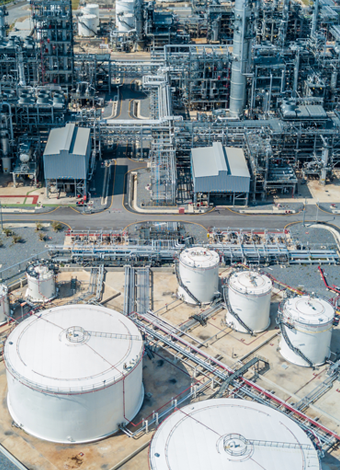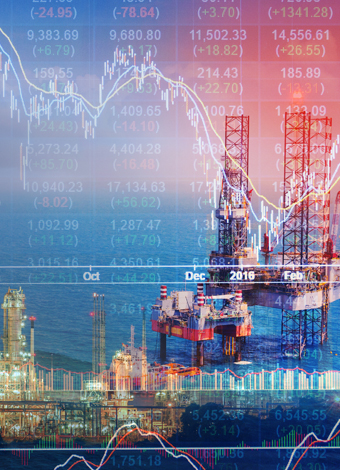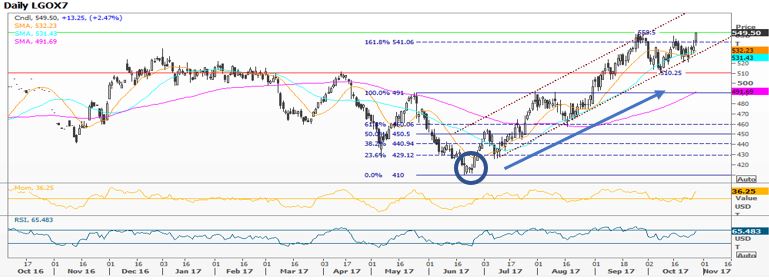Welcome to “GRIPPING THOUGHTS”, the space created by Insights Global where Clients, Partners and Friends are invited to share ideas and insights that help shedding light on the challenges that the Oil & Gas industry faces, in the near and long future.
So join us and get inspired by IVAR BERNTZ, Research Analyst in the Cross-Industry and Advanced Manufacturing Group at GARTNER :
“Gartner recently released the results of their 2019 CIO Survey Oil and Gast Industry insights
, based on 84 responses out of the 3,102 overall respondents from 89
countries. Let us discuss two of the questions posed, namely: 1) What is
your organization’s top priority for 2018/2019? and 2) What technology
area do you expect to be a game-changer for your organization?
Through 2018 oil and gas firms have made continued significant
progress improving efficiency. With improving balance sheets and leaner
operations, it is unsurprising that oil and gas executives are strongly
focused on revenue and business growth as their top priority, as stated
by 28% of the respondents. Caution, however, is still in evidence since
the recovery is recent and market conditions remain volatile.
Operational excellence provides a relatively low-risk route to growth
and profitability and is the priority for 26% of respondents.
Oil and gas company executives, senior leaders and functional
managers are embracing digital. This year 22% of survey respondents
rated it as top priority, compared with only 8% last year. Recognition
of the capacity of digital innovation to both optimize and transform
business models has crossed a tipping point in the industry,
significantly elevating digital as a priority. Nevertheless, companies
in most other industries are more likely to prioritize digital, a sign
that traditional oil and gas industry inertia has not disappeared.
Progress may be rapid by oil and gas standards but is only just keeping
pace with trends outside the industry.
The oil and gas industry’s striking enthusiasm for analytics
continues unabated, with 44% of oil and gas CIOs expecting data
analytics to be the top game-changing technology for the industry this
year — double the percentage across industries. Despite occasional
mixed results and scepticism of vendor promises, analytics has gained
widespread acceptance based on multiplying use cases and demonstrated
value. As digital ambitions intensify, analytics is consistently
prioritized by oil and gas leadership seeking proven ways to derive
business value from digital technologies.
The greatly elevated priority of the IoT is new, with 24% of
respondents now identifying it as a game-changing technology compared to
8% last year. As companies deal with existing inefficiencies, continued
pursuit of operational excellence demands new strategies to improve
asset performance, driving greater use of analytics for simulation and
prediction of future behaviour. Analytics’ focus also shifts from
reactive modelling offline to nearer real time. IoT offers advantages in
data collection and system responsiveness over legacy systems to
support this. However, cost-benefit considerations have so far acted as a
brake on adoption, especially on mature assets. With renewed business
growth the comparative advantages (and increasing cost-effectiveness) of
IoT promise performance differentiation that will accelerate take-up.
A stark difference between oil and gas and all industries is apparent
in artificial intelligence/machine learning. Across all industries,
artificial intelligence/machine learning is ranked as the No. 1
game-changing technology across all three categories of performers, with
40% of top performers placing it at the top. While it is the
third-most-cited, game-changing technology in oil and gas, only 21% of
industry CIOs rate it as the top technology.
In part, this reflects the natural mistrust of the industry to hyped
technology. Many oil and gas operators are still exploring ML and AI use
cases and have yet to operationalize it. Understanding is more concrete
for other technologies today, which — given the asset-centric nature of
the business — are also expected to deliver significant value leading
to a more even spread of expectation. Nevertheless, the growth of AI and
ML, along with the elevation of IoT, indicates a shift in focus in the
industry toward greater real-time connectivity and prediction for asset
optimization.
Given this background, what do you believe will be your
organization’s top priority for 2019 and what technology will be a game
changer to accomplish it?”
PS: if you want to contribute to “Gripping Thoughts” please send an email to acavalcanti@insights-global.com
Find here other “Gripping Thoughts” articles:
Read now the interview with Bertrand Chupin, VP of the Loading Systems business unit of TechnipFMC, a global leader in subsea, onshore/offshore and surface projects, with about 37,000 employees.



